
1878 - 1939
Kuzma Sergeevich Petrov-Vodkin
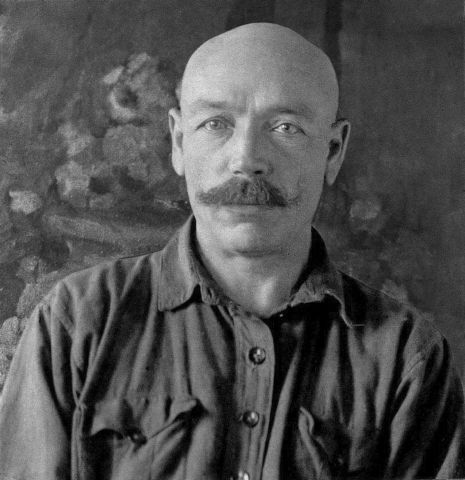
description
An Outstanding Russian painter and theater artist, a graphic artist and art theorist, a teacher and writer. He was a member of the World of Art group, one of the co-founders of the Free Philosophical Association, a member of the Four Arts association. Participated in the Paris Salons, exhibitions “Golden Fleece”, in the international “Baltic Exhibition” (Sweden), the society “Heat Color”. Was awarded the title of Honored Artist of Russia. He devoted a lot of his efforts to the activity of a teacher, to developments in the theory of painting, and was engaged in the reorganization of the system of art education.
Key ideas:
– Kuzma Petrov-Vodkin, being a Symbolist raised by the Paris school, an icon painter in the past, who did not hide his interest in religious art even during the times of militant materialism, was nevertheless recognized by the Soviets and actively participated in the artistic life of the country.
– The master considered painting to be a means and even a tool for improving human nature; he sought to discover the manifestation of the eternal laws of the general structure of the world in a human being through the ideas of his works. In such paintings as his famous «Red horse», the image is the embodiment of the connection between space powers and a certain time and events. This is a bright example of Symbolist painting with a very deep image representing the époque of changes (it was created in 1912) and speaking from its face. At the same time, the image of the horse looks like an iconographic image, most often present in the plots with George the Victorious.
– “The shape and the colour that embraces this form is painting itself,” Vodkin himself formulated his principle, leading to his theory of the “three-color scale”. He fully applied this principle and this theory in “Playing Boys” (1911), which became his program work. The specialty of his later manner became the use of the limited number of colors – red, yellow, blue (or green). These colors are used in icon painting.
– Compositional solutions also changed – they got balance and certain static, even if the image implies movement. This innovation makes each picture unique , and when applied to the “Red Horse” – even ingenious. Often creating still lifes, Petrov-Vodkin found rich experimental possibilities in this genre, as it is seen in the “Still-life with a rose”.
1878
1889 - 1895
1895 - 1897
1897 - 1905
1901
1905
1907
1909 - 1919
1911
1914
1918
1919
1924
1930
1939
The artist was born
Received education in a city school

He studied at the St. Petersburg Central School of Technical Drawing of Baron Stieglitz

Studied at the Moscow School of Painting, Sculpture and Architecture
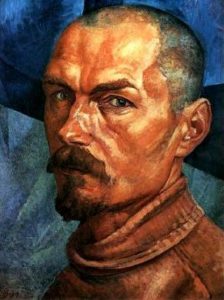
He attended classes at the school of A. Azbe

Graduated from Moscow School of Painting, Sculpture and Architecture
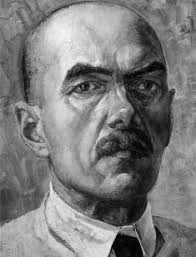
He visited Italy
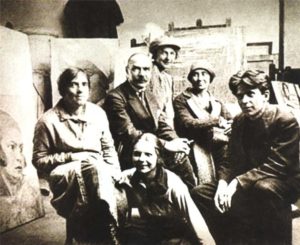
Participated in the exhibitions “The Golden Fleece”
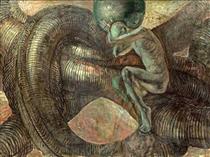
Became a member of “The World of Art”

Exhibited his paintings in Malmo at the international “Baltic Exhibition”

The artist started teaching activity
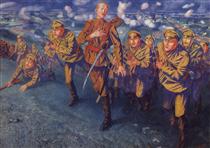
Became one of the founders of the Free Philosophical Association
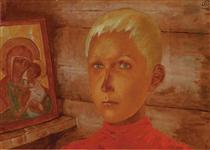
Entered the “Four Arts” association

He received the title of Honored Artist of Russia

The death of the artist
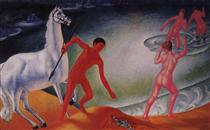
Kuzma Sergeevich Petrov-Vodkin
On Artist
flow
Symbolism
friends
Robert-Friedrich Meltzer
Alexander Terentevich Matveev
artists
Puvi de Chavannes
Mikhail Vrubel
Valentin Serov
Victor Borisov-Musatov
Anton Azhbe
Fedor Emelyanovich Burov
By Artist
flow
Expressionism
friends
Pavel Varfolomeevich Kuznetsov
Peter Savvich Utkin
artists
Pavel Efimovich Ab
Victoria Markovna Belakovskaya
Vladimir Alexandrovich Gorb
Nikolai Ivanovich Dormidontov
Ruben Agasevich Zakharyan
Victor Mikhailovich Oreshnikov
Proshkin Anatoly Nikolaevich
Proshkin Victor Nikolaevich
Mariam Arshakovna Aslamazyan
Alexander Adolfovich Debler
Vladimir Vladimirovich Dmitriev
Alexey Ivanovich Zernov
Kalmykov Sergey Ivanovich
Nikolai Nikolaevich Kupreyanov
Israel Lvovich Lizak
Malagis Vladimir Ilyich
Pestinsky Boris Vladimirovich
Alice Poret
Sergey Vasilievich Priselkov
Alexander Nikolaevich Samokhvalov
Lidia Fyodorovna Frolova-Bagreeva
Leonid Terentyevich Chupyatov
Schmidt Alexander Vladimirovich
Jacobson Alexandra Nikolaevna
